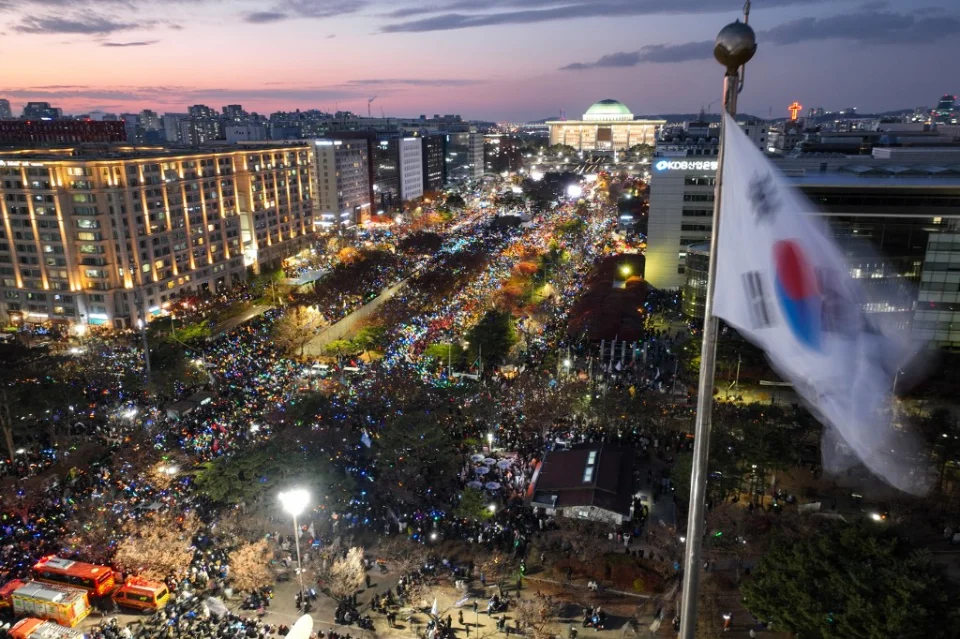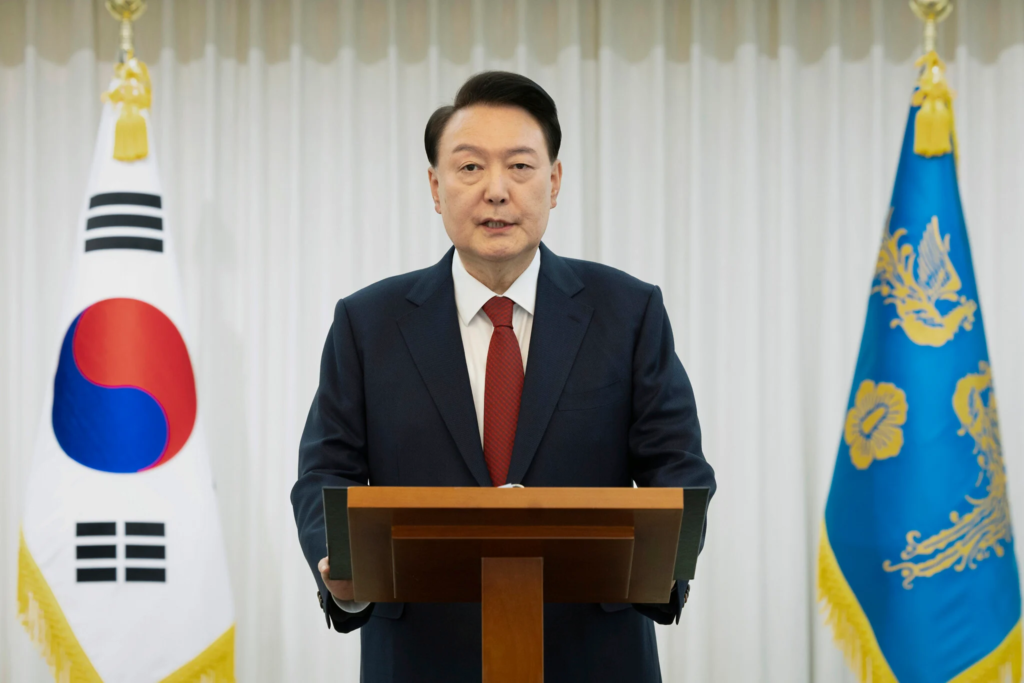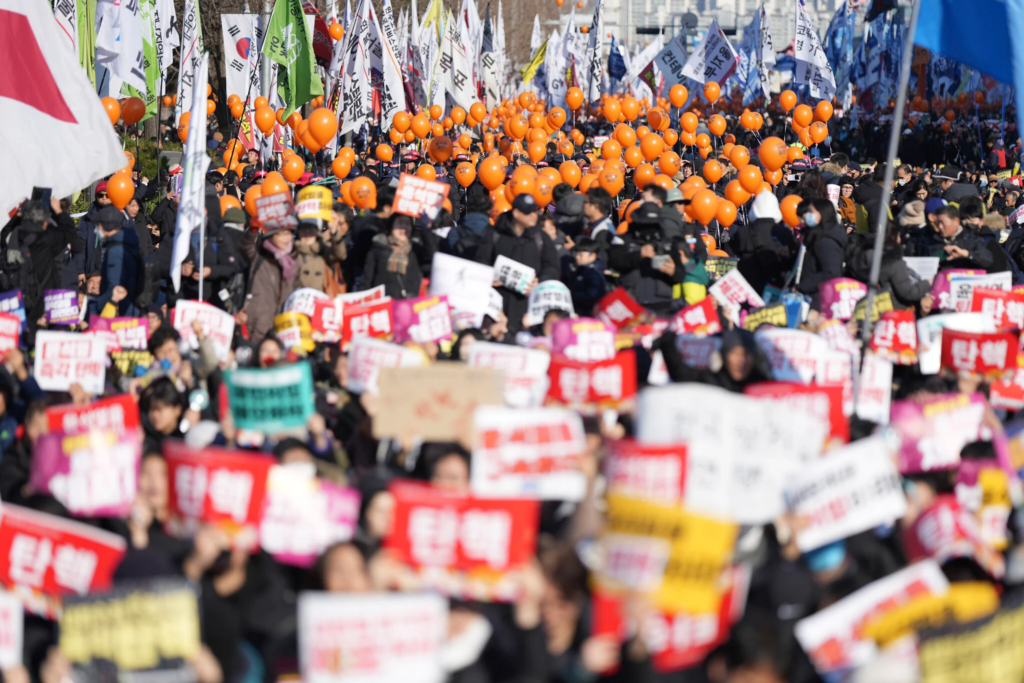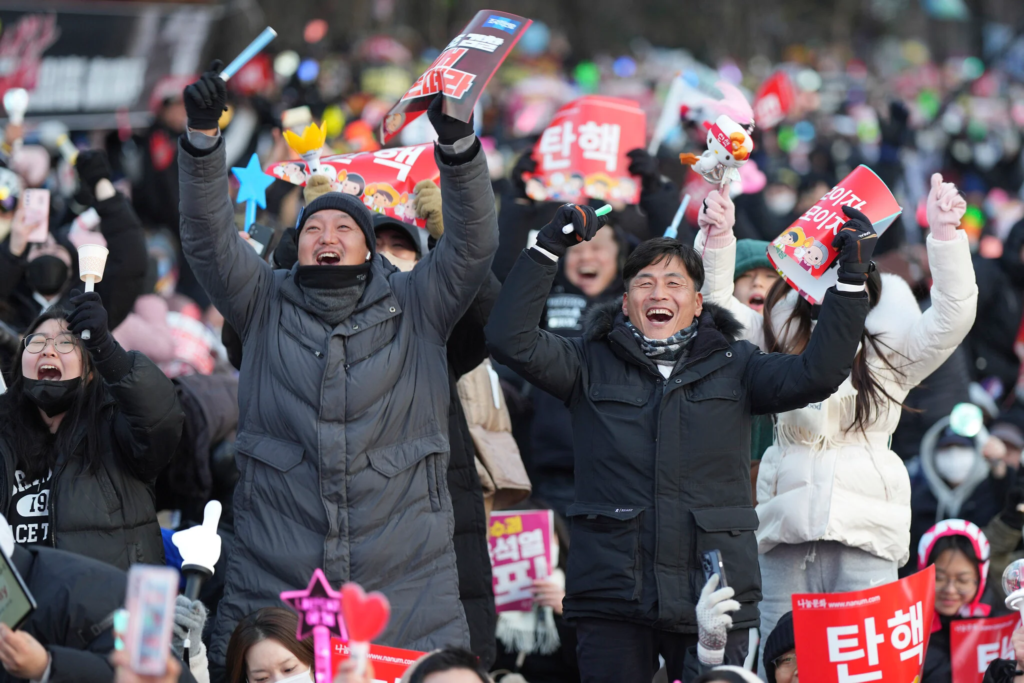South Korean Workers Mobilize for Regime Change Amid Political Turmoil
South Korea is in the midst of a significant political upheaval following the parliamentary impeachment of President Yoon Suk Yeol. Massive protests and strikes have erupted nationwide, with workers and students leading the charge against a government accused of failing its citizens. The impeachment vote, while a critical milestone, has yet to be finalized by the Constitutional Court, keeping the nation on edge as public pressure continues to mount.
Mass Mobilizations Following Impeachment Vote

On Saturday, South Korea’s parliament voted to impeach President Yoon Suk Yeol, a move that sparked celebrations and intensified demands for systemic change. Protesters across the country have taken to the streets, calling not only for Yoon’s immediate removal but also for his arrest. The movement has drawn significant participation from workers and students, with over 100,000 people gathering outside the National Assembly in Seoul on Friday. Similar demonstrations have occurred in cities nationwide, marking the largest wave of inter-university student mobilizations in over a decade.
Despite the public outcry, Yoon has remained defiant, labeling the impeachment process as an attack on the country’s constitutional order and appealing to right-wing factions for support. His response has further galvanized the opposition, with workers and unions stepping up their efforts to push for his ouster.


Workers Take the Lead in Protests
The labor movement has been at the forefront of the resistance, with unions organizing strikes and protests to pressure the government. Workers at Kia Motors staged multiple strikes this week, with many calling for more sustained action. The Metal Workers’ Union, a key player in the protests, has faced criticism from rank-and-file members for limiting strikes to brief, symbolic actions.
Some workers have called for an all-out strike to maintain momentum, highlighting a growing dissatisfaction with union leadership. This internal division has underscored the need for greater unity and coordination within the labor movement to maximize its impact.
Economic Struggles Fuel Discontent
The protests come against a backdrop of economic stagnation and widening inequality. Yoon’s attempts to implement austerity measures, including cuts to healthcare and pensions, have deepened public frustration. South Korea’s key industries, such as semiconductors and automobiles, have been hit hard by global market instability and intensifying competition between the United States and China.
These economic pressures have further strained the working class, fueling the current wave of mobilizations. The president’s inability to address these challenges has only heightened calls for his removal.


Challenges Within the Trade Union Movement
Despite the momentum, challenges remain within the trade union movement. Union leadership has been criticized for its cautious approach, with some strikes ending prematurely without significant victories. This has led to frustration among workers who feel that more radical action is needed to achieve meaningful change.
However, the protests have also created opportunities for grassroots mobilization and solidarity. Workers are increasingly taking independent action, demonstrating their potential to drive the movement forward even as traditional union structures falter.
South Korea’s political crisis is far from resolved. While the Constitutional Court deliberates on the impeachment, the protests show no signs of waning. The movement represents more than opposition to Yoon—it is a broader fight for systemic reform and social justice.
As workers and students continue to lead the charge, the potential for transformative change grows. However, overcoming internal divisions and maintaining momentum will be critical in the weeks and months ahead. The protests are a testament to the power of collective action, offering hope for a more equitable future.


